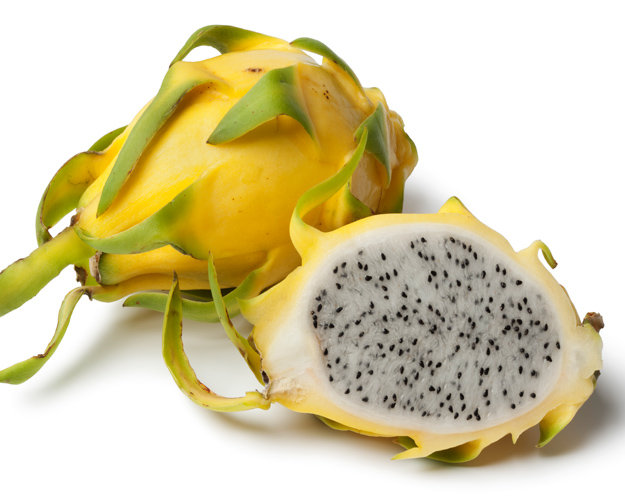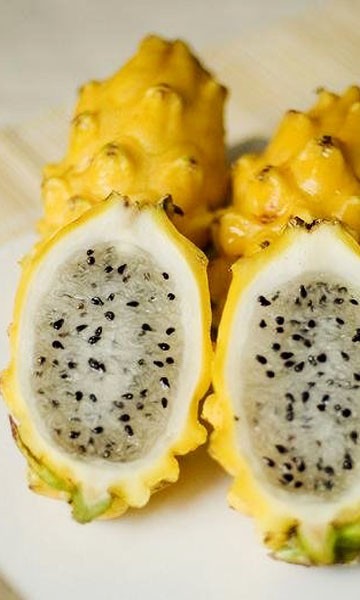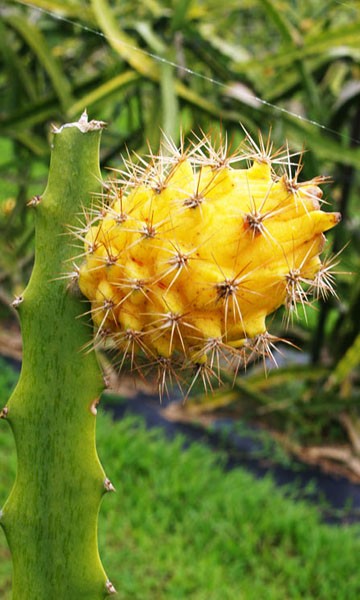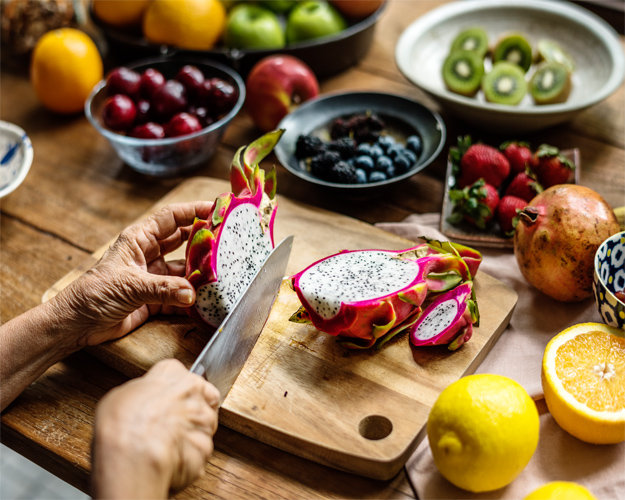- Overview
Common name: Dragon Fruit, Pitaya, Pitahaya Botanical name: Hylocereus sp. Family: Cactaceae Origin: Central America Varieties: Red , Yellow & White Season: year round according to variety Damage temp: 27 F Dragon Fruit Plant Yellow Variety in a 3 Gallon Conatiner. This climbing cactus is one of the most beautiful and wide spread members of the Cactaceae family. The magnificent night blooming white flowers can be up to14 inches in diameter. The fruit is most often eaten chilled and cut in half so the flesh may be spooned out. The juice is used in frozen drinks and it is in a new Tropicana Twister flavor. The red fruit are high in lycopene which is a natural antioxidant that is known to fight cancer and heart disease. Fruit are expensive, usually $5-9 each in stores.rn
Description
Uses
Origin and DistributionDragon Fruit Hylocereus undatus a.k.a. Pitahaya, Strawberry Pear Round, often red colored fruit with prominent scales. The thin rind encloses the large mass of sweetly flavored white or red pulp and small black seeds. Some varieties are pinkish or yellow.
Description
A vining, terrestrial or epiphytic cactus, with fleshy stems reaching from a few inches up to 20ft long (in mature plants). The plant may grow out of, and over the ground or climb onto trees using aerial roots. It grows best in dry, tropical or subtropical climates where annual rainfall ranges from 20-50" per year. In wet, tropical zones, plants may grow well but sometimes have problems setting fruit reliably. Will tolerate temperatures to 104F, and short periods of frost, but prolonged cold will damage or kill the plant. The plants aren't usually too picky as to soil type, but because of their epiphytic nature, it is recommended to grow them in soil that is supplemented with high amounts of organic material. The plant has been grown successfully in sandy soils. Shade is sometimes provided in hot climates. Flowers are ornate and beautiful, and many related species are propagated as ornamentals. They bloom only at night, and usually last just one night where pollination is necessary to set fruit. In full production, pitahaya plants can have up to 4-6 fruiting cycles per year. Propagation: By seed, or by stem cuttings.
Uses
The fruit is popular eaten chilled, out of hand. It is also used to flavor drinks and pastries. Unopened flowerbuds are cooked and eaten as vegetables.
Origin and Distribution
The exact origin is unknown, but is likely from Southern Mexico through Belize, Guatemala, El Salvador and Costa Rica. It is cultivated around the world in tropical regions. - Features
weight: 9.99 lbs : - ReviewsThere is no reviews yet...Be the first!
Be the first to write a review of this product!









